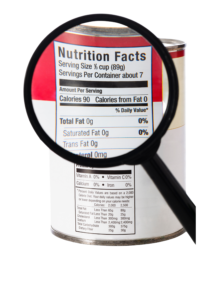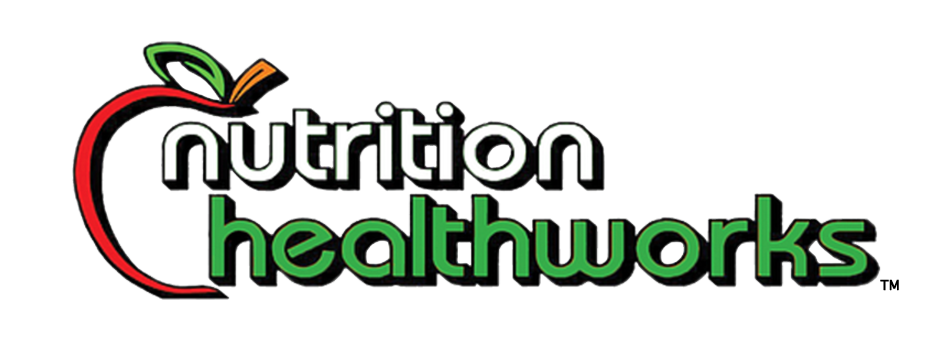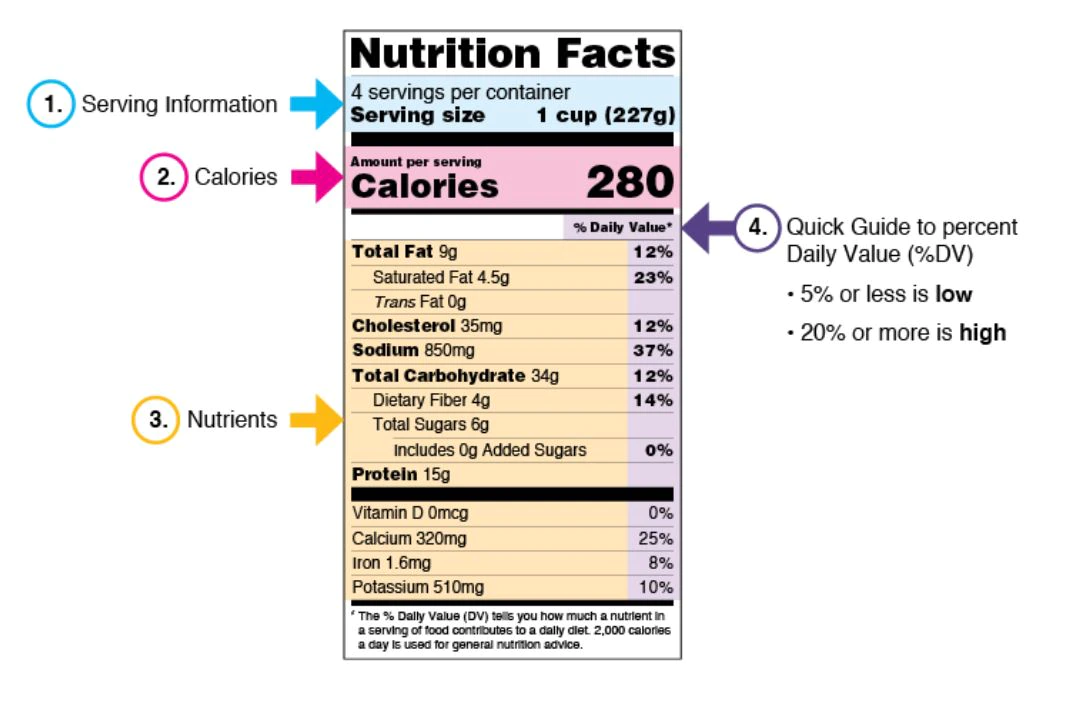Why Reading Nutrition Labels Is Important
Become a savvy shopper by reading and comparing nutrition labels when making food selections. The new food nutrition label makes it easier to gather information in order to make healthy choices. A few general things to consider include:
- Serving size and calories. Plan calories wisely to manage your ideal body weight.
- Focus on the inclusion of healthy nutrients such as fiber, vitamin D, calcium, iron, and potassium. Try to aim for high % Daily Values of these nutrients.
- Minimize or reduce the amount of saturated fat, trans fat, sodium, and added sugar. Consuming less of these may reduce your risk for heart disease, high blood pressure, and cancer.
Sections of a Nutrition Label:
- Serving Information
- Calories
- Nutrients
- Percent of Daily Value
* Remember that 5% or less of daily value is considered low, where as 20% or more of daily value is considered high.
What Do Food Labels Really Tell Us?

- Serving Size and Number of Servings: It’s important to know the serving size to determine the nutrition content. If the serving is ½ cup and you consume 1 cup, the caloric and nutrient intake will double. Keep in mind the number of servings per container, as even small containers may include more than 1 serving.
- Calories: The calories are now listed in larger bold print for greater awareness and easy comparison between products.
Note: some food labels will make calorie claims; these are the definitions:
- Low Calorie- contains less than 40 calories per serving.
- Calorie Free- provides less than 5 calories per serving
 Percent Daily Value (DV):This section provides the percentage of nutrients provided in
Percent Daily Value (DV):This section provides the percentage of nutrients provided in
a single serving size based on a 2,000 caloric intake. This can help you identify nutrients
that are present in a low or high percentage. Note: if it provides 5% or less that is
considered low and 20% or more is considered a high percentage.
- Nutrients:
-
- Total Fat: An important consideration is the amount of saturated and trans fats as a high intake of these fats is associated with an increased risk for heart disease.
- Saturated fat: limit to less than 20 gm per day
- Trans fat: aim for as little as possible
- Cholesterol: Cholesterol is found in animal products such as meat, poultry, fish, dairy, and eggs. Aim for less than 300 mg. of cholesterol per day. Note: a low cholesterol food contains less than 20 mg cholesterol and 2gm or less saturated fat per serving.
- Sodium: Consuming too much sodium or salt may increase your risk for high blood pressure. Monitor your intake of processed foods and look for low sodium foods that contain 140 mg or less per serving. The goal is less than 2300 mg/day.
- Total Carbohydrate: Foods rich in carbohydrates include bread, pasta rice, fruit, vegetables, and sweets. Choose whole foods over processed options to reduce added sugars and select 100% whole grains to increase fiber intake.
- Dietary Fiber: fiber is rich in whole grains, legumes, fruits, and vegetables. A high fiber
food provides 5 gm per serving. Aim for 25-35 gm per day. - Added Sugars: limit added sugars. Aim for less than 10% of total daily calories
- Protein: Good sources of protein include both animal and plant sources such as meat,
fish, eggs, dairy, legumes, and nuts/seeds. - Vitamin/ Minerals: Select foods that offer rich sources of Vit D, Calcium, Iron and
Potassium. Many Americans do not get enough of these nutrients and adequate intake
can reduce one’s risk for osteoporosis, anemia, and high blood pressure.
-

Ann Sukany-Suls
MEd, RDN, LD - Mooresville NC
Ann Sukany-Suls is a Licensed and Registered Dietitian Nutritionist with a Master’s Degree in Counseling and over 30 years of experience. Ann specializes in weight management and medical nutrition for chronic disease and GI disorders. READ MORE


